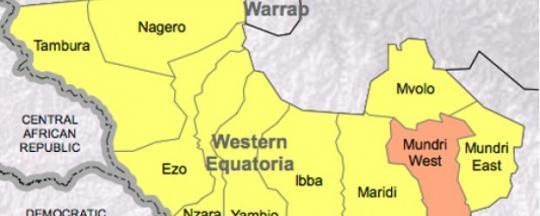The Ceasefire and Transitional Security Arrangements Monitoring Mechanism (CTSAMM) published on Friday on its website five new reports on ceasefire violations that took place in recent months. Three of the reports are about violations by SPLM-IO or allied forces and two are about government violations.
Here’s a summary of the newly released findings of the ceasefire monitors:
Government offensive in Western Equatoria: CTSAMM reported that government forces attacked Bari village in Mundri West County on 10 February then moved on to Gariya village where they burned up to 150 tukuls, food stores and crops and looted the clinic. Nobody was killed because civilians fled the villages before the SPLA arrived.
On 11 February, government forces based in Lanyi attacked the village of Lozoh, according to CTSAMM. “Government officials and SPLA officers in Lanyi freely admitted the attack had taken place.” They burnt houses and crops. CTSAMM concluded that the government forces had deliberately mounted offensive operations against opposition forces in the area, in violation of the peace agreement.
CTSAMM monitors encountered soldiers in Bari village who claimed to be SPLM/A-IO members under the command of General Wesley Welbe. They also found abandoned defensive positions in Lozoh village. CTSAMM heard testimony that two men and a girl were burnt to death in Lozoh, and interviewed one badly burned survivor. No other casualties were confirmed.
Read the full report here.
SPLM/A-IO ambush in Upper Nile: CTSAMM reported that an ambush took place on 8 February between Akoka and Malakal in Upper Nile, which resulted in the wounding of three people, including at least one National Security officer. CTSAMM said the attack took place near territory controlled by General Johnson Olony’s forces on the west bank. The monitors said they were convinced “beyond any reasonable doubt” that the attack was carried out by opposition forces.
Read the full report here.
SPLM/A-IO or allied forces attack garrison in Mundri East County: CTSAMM reported that on the night of 24 December 2015, opposition forces attacked a government garrison in Lui from two directions, shooting and shelling the base. Fighting lasted about two hours and four government soldiers were reportedly killed. Ceasefire monitors witnessed signs of fighting in the area and concluded that an attack had taken place and that SPLM/A-IO forces based nearby must have been responsible.
Read the full report here.
Gen. Olony’s forces shell east bank at Mina Jalhac: CTSAMM investigated a mortar attack on the Mina Jalhac area in Upper Nile State, which took place on 28 January and resulted in the burning of several houses and depopulation of the area. Since the west bank of the river is “dominated by forces affiliated to the SPLM/A-IO,” the ceasefire monitors concluded that they were responsible for the attack. Nobody was hurt but people’s lives were endangered and now they fear to go back.
Read the full report here.
Government ‘fail to protect civilians’ during security operations in Wau area: CTSAMM monitors visited the Momoi area in Western Bahr el Ghazal State, where SPLA allegedly burnt down the village, and displaced or arrested many of the inhabitants. During the visit by the monitors, “government forces soldiers did not allow them to talk to the local population.” The monitors were able to interview people in another nearby area. however. They concluded that government forces engaged in “acts of hostility” toward the civilian population. But CTSAMM also referred to “credible reports suggesting that Government Forces have been subject to attacks and provocation.” The monitors also stressed that they found no evidence that armed groups in the area are tied to the SPLM/A-IO.
Read the full report here.




